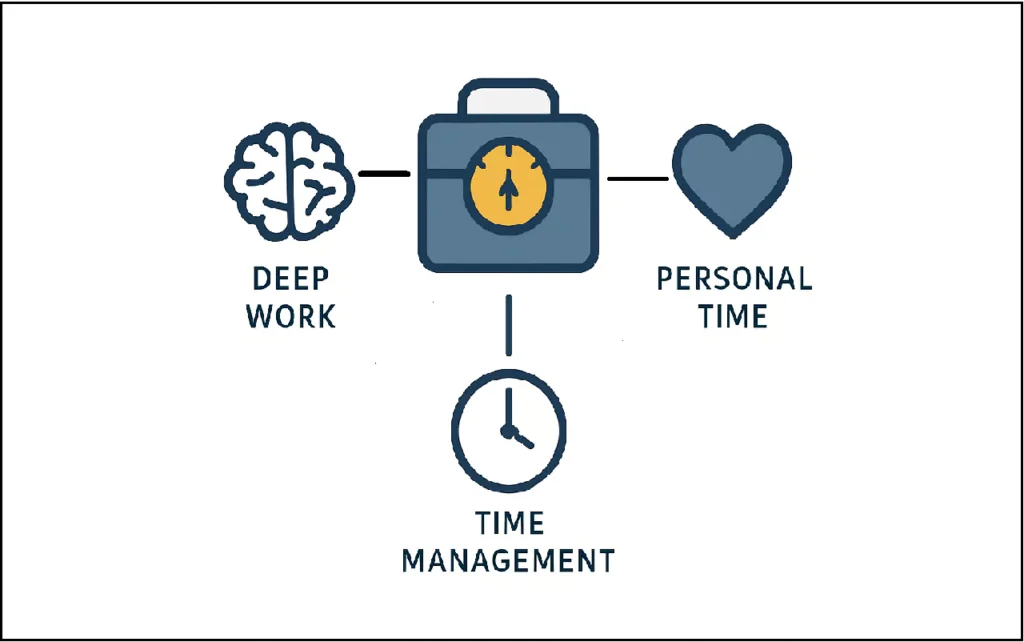
Let’s cut to the chase: your phone is destroying your ability to focus, and you know it. The average smartphone owner clicks, taps, or swipes their phone 2,617 times a day. U.S. adults now check their phones an average of 352 times per day, once every 2.7 minutes during waking hours. That’s not just a distraction, that’s digital chaos.
If you’ve tried screen time apps, website blockers, or pure willpower, you’ve probably discovered what millions have: they don’t work. Your brain always finds a way around digital barriers. But there’s a simple, physical solution helping people reclaim their focus and skyrocket their productivity: timed lock boxes.
Here’s why these seemingly basic containers are the secret weapon of high performers, and how they can transform your ability to do deep, meaningful work.
The Brutal Truth: How Your Phone Hijacks Your Brain
Your smartphone isn’t just interrupting you when it buzzes, it’s sabotaging your cognitive abilities even when it’s sitting silently on your desk. The research on this is frankly terrifying.

The Cognitive Switching Penalty
Every time you glance at your phone, your brain pays a massive switching cost. It takes over 20 minutes to fully re-engage with a task after being interrupted. Think about that: a quick peek at a notification doesn’t just steal 30 seconds, it derails 20+ minutes of focused work.
This constant context switching overloads your brain and can kill productivity by up to 40% or more, costing the global economy an estimated $450 billion annually.
The “Mere Presence” Effect
Here’s what should really worry you: your phone doesn’t even need to be on to hurt your performance. Studies from the University of Chicago show that the mere presence of your phone, even when turned off and face down, reduces your available working memory and fluid intelligence. Your brain expends precious energy just to not pick it up.
The Addiction Reality Check
This isn’t about being “a little distracted.” A staggering 56.9% of American adults self-report a cell phone addiction, and 49% feel controlled by their devices. The problem isn’t knowing you have a problem; it’s that knowledge alone is powerless against the deeply ingrained neurological habit.
Why Lock Boxes Work When Willpower Fails
Screen time apps are suggestions. Website blockers are requests. A timed lock box? That’s a physical commitment your brain can’t negotiate with.

The Power of a Non-Negotiable Barrier
When your phone is locked in a box, there is no “just one quick check.” There’s no password to override, no setting to tweak, no loophole to exploit. The phone is simply gone from your environment. This is critical because it eliminates two things: the temptation itself and the cognitive load of resisting that temptation. Your brain stops fighting an internal battle and can redirect that energy toward actual work.
The Psychology of Pre-Commitment
A lock box is what psychologists call a “commitment device”, a choice you make in the present that locks you into a smarter course of action for the future. By physically placing your phone in the box and setting the timer, you remove the burden of constant decision-making from your overtaxed prefrontal cortex. You make one good decision now, so you don’t have to make a hundred bad ones later.
The Real-World Benefits of Undistracted Work
Locking away your phone isn’t just about getting more done; it’s about changing the quality of what you do. The benefits touch every aspect of your professional and mental life.
Reclaim Your Deep Work Superpower
Deep work, the ability to focus without distraction on a cognitively demanding task, is the key to producing high-value output. It’s a superpower in our distracted world. By creating the conditions for genuine deep work, you can:
- Maintain focus for 2-4 hour stretches, not just 10-minute fragments.
- Tackle complex problems that require sustained mental effort.
- Enter “flow states” where your best creative and analytical work happens.
- Complete in one focused session what used to take you all day.
Gain Mental Clarity and Reduce Fatigue
When your brain isn’t constantly switching contexts, the benefits are profound. A reported 43% of employees feel tired from jumping between tasks. Eliminating phone-induced switching leads to:
- Reduced mental fatigue and burnout.
- Sharper problem-solving and clearer thinking.
- Better decision-making, as you’re not depleting willpower on phone resistance.
Lower Stress and Improve Work-Life Balance
The “always-on” mentality is exhausting. Creating phone-free periods with a lock box helps you:
- Truly disconnect from work during personal time.
- Be genuinely present with family and friends.
- Develop a healthier relationship with technology where you are in control.
- Experience genuine downtime that actually recharges your mind.
Your Lock Box Game Plan: How to Use It for Maximum Impact
A lock box is a tool, but a strategy turns it into a system for success. Here’s how to apply it to specific areas of your life for a transformative impact.

Work and Study Sessions
- 90-Minute Deep Work Blocks: The gold standard for complex projects.
- Pomodoro Amplification: Lock your phone for 25-50 minute sprints to supercharge this popular technique.
- Meeting Shield: Be the one person in the meeting who is fully present and engaged.
- Study Fortress: Students report dramatic improvements in retention and comprehension.
Creative and Strategic Thinking
- Uninterrupted Brainstorms: Let your mind wander and make novel connections.
- Strategic Planning: Big-picture thinking requires mental space that constant connectivity destroys.
- Writing and Content Creation: Long-form work demands sustained focus that phones obliterate.
Personal Time Reclamation
- Intentional Mornings: Start your day with journaling or meditation, not emails and notifications.
- Restful Evenings: Create a phone-free hour before bed for dramatically better sleep quality.
- Protected Family Time: Be fully present with the people who matter most.
How to Build Your Focus Muscle Gradually
Don’t go from checking your phone 300 times a day to an 8-hour lockdown. Build the habit progressively.
- Weeks 1-2: Start with 30-60 minute sessions during your most important daily task.
- Weeks 3-4: Extend to 90-minute or 2-hour blocks for deeper work.
- Month 2: Experiment with half-day locks for major projects or weekend digital sabbaths.
- Ongoing: Customize your approach based on your goals and focus patterns.
Overcoming Common Hurdles
If the idea of locking away your phone gives you a jolt of anxiety, you’re not alone. Let’s tackle the two biggest mental hurdles that stop people from getting started.
“But What About Emergencies?”
This is the most common fear. The reality is that true, life-or-death emergencies are rare, and most “urgent” notifications are just other people’s poor planning. For peace of mind:
- Inform Key People: Tell a partner or close colleague, “I’ll be unreachable for 90 minutes. If there’s a true emergency, call [alternative contact].”
- Choose a Model with an Override: Some boxes have a limited number of emergency overrides.
- Start Small: Build your tolerance for being disconnected by starting with 30-minute locks. You’ll quickly realize the world doesn’t fall apart.
“What About FOMO (Fear of Missing Out)?”
Fear of missing out is real. But what you’re actually missing out on is your own life: the ability to do meaningful work and be present with loved ones. Reframe it as JOMO, the Joy of Missing Out on digital noise, so you can focus on what truly matters.
The Bottom Line: Your Attention is Your Most Valuable Asset
In an economy that pays top dollar for focused, high-quality work, your attention is your most valuable professional asset. In a world of digital noise, your presence is your most valuable personal gift.
A timed lock box might seem like a simple, almost primitive tool for a modern problem. But its power lies in that simplicity. It bypasses willpower and removes the source of distraction. It gives your brain the space it needs to think deeply, create meaningfully, and work with genuine focus.
Ready to see what you’re capable of? For a complete guide to finding the right tool for the job, check out our in-depth review: The 9 Best Timed Lock Boxes for Reclaiming Your Focus. We’ve tested them all so you can find the perfect match for your goals.
Start with just 30 minutes tomorrow. Lock it away, and see what your brain can do when it’s finally free. You won’t just be surprised by what you accomplish, you’ll remember how good it feels to be in control.

